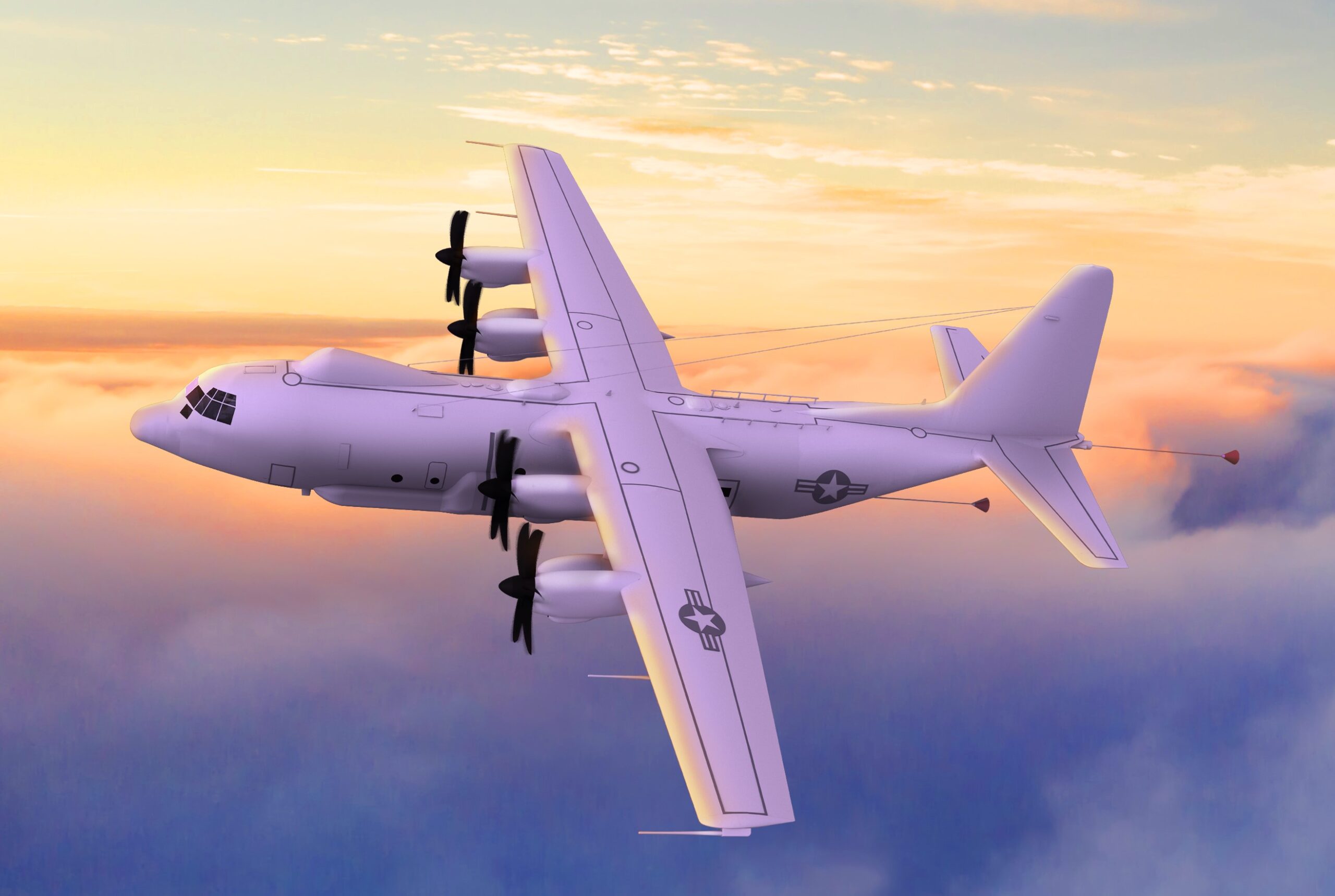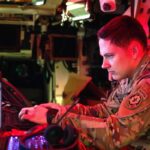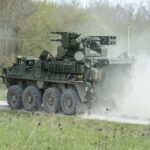The Navy has given its next-generation nuclear command-and-control aircraft a name: Phoenix II. The service announced the designation on Aug. 7, 2025 and tied the choice to the C-130 family’s long service in related roles. The airframe will form the backbone of a new survivable link meant to keep national command authorities in touch with strategic forces if ground networks fail.
Phoenix II – program status
The program uses the Lockheed Martin C-130J-30 airframe. The mission systems integrator is Northrop Grumman. Collins Aerospace provides the Very Low Frequency (VLF) communications package that lets an aircraft send messages to submerged ballistic missile submarines. The Navy awarded Northrop the mission-systems integration contract in late 2024.
Contract language and service releases list initial engineering and test lots. The prime contractor will integrate government-furnished C-130J airframes with the VLF trailing-wire and onboard suites needed for the Take Charge And Move Out mission.
What the Phoenix II will do
TACAMO – Take Charge And Move Out – exists to preserve a direct, survivable voice and data link from national leaders to strategic forces. The Phoenix II will host VLF transmitters and other hardened routing to send authenticated instructions to ballistic missile submarines. It will also provide alternate paths to other elements of the nuclear enterprise when fixed nodes lose connectivity.
The aircraft operates as a floating, mobile relay. That function requires long-wire antennas and systems tuned for signal propagation into seawater. The mission imposes unique demands on airborne power, electromagnetic compatibility, and mission-crew handling.
Platform choice, capability tradeoffs
Choosing the C-130J-30 reflects a set of tradeoffs. The Hercules offers range with loiter capability, a mature logistics base, and global sustainment lines. The C-130 also accepts large mission-system packages and long trailing-wire antennas that fit the TACAMO profile. The Navy’s press material frames the Phoenix II as a modern NC3 (nuclear command, control and communications) node built for longevity.
The legacy fleet is the E-6B Mercury, a 707-derivative that entered service in the 1980s. The transition plan keeps the existing E-6Bs flying while the Phoenix II undergoes development and tests.
Program officials expect staged deliveries. Initial flight-test articles will validate VLF performance, electromagnetic hardening and the airworthiness of the modified airframe. The system integrator’s job is to make disparate subsystems operate under the same safety and mission constraints.
Looking Glass and service ownership
The E-6B carried more than TACAMO. It also supported broader airborne command post tasks historically associated with the Looking Glass mission set – airborne survivable command ties to other nuclear forces. The Pentagon has debated whether to leave that capability with the Navy or return parts of it to the Air Force.
Service leaders told Congress the split decision turns on roles and ownership. Air Force witnesses said they can take on specified responsibilities once given time to stand up doctrine, training and materiel under an appropriate analysis. Navy witnesses said they will continue to cover TACAMO and interim requirements until a final ownership decision is made.
Risks
Shifting a mission that involves submerged contacts, secure authentication and extreme survivability raises risk types that planners track separately. Hardware development risk sits with integration of VLF transmitters, trailing-wire performance, and electromagnetic shielding. Software risk centers on message routing, encryption and authenticated interfaces to strategic command nodes. Human factors risk focuses on crew procedures for sustained operations under high threat conditions.
Supply-chain and common-mode risks also matter. Using a widely sustained airframe reduces logistics risk. Still, specialized transmitters and long-wire antenna materials create single-source pressure points. Program managers plan for spare inventories and alternate vendors where possible.
Budget posture
The recapitalization effort appears in Navy and DoD budget requests for FY-2026 and beyond. Documents tied to the FY-2026 request show dedicated research and development funding for NC3 recapitalization, and service justification materials reflect options for several prototype and production aircraft. The exact buy quantity the Navy will field remains subject to budget decisions and future procurement actions.
Industry contract language describes an initial tranche of engineering development models and optional production lots. That structure lets the Navy pace risk reduction, demonstrate key capabilities, and then exercise production buys if tests validate performance.
Strategic force
A mobile, survivable airborne relay reduces single points of failure in strategic communications. It gives national leaders an alternative path when fixed, terrestrial networks degrade. That capability supports deterrence stability by preserving assured communications to the sea-based leg of the triad.
Shifting parts of the Looking Glass mission to another service would split ownership and ease some logistics. It would also require parallel investment in doctrine, training and infrastructure.
Program offices will publish follow-on milestones: engineering development flights, VLF field tests, and contract options exercised into production lots. Congressional budget cycles will determine procurement pacing. Watch for formal decisions on Looking Glass ownership and for any changes to procurement quantities in department budget submissions.
Our analysis shows the Phoenix II program aims to replace aging E-6Bs with a hardened, serviceable platform built from a widely supported airframe and a focused mission-systems package.
REFERENCE SOURCES
- https://www.breakingdefense.com/2025/05/pentagon-to-deliberate-splitting-e-6b-mission-set-handing-back-key-nuclear-c2-role-to-air-force/
- https://www.navair.navy.mil/news/E-130J-popular-name-announced-TACAMO-mission-aircraft/Thu-08072025-0941
- https://www.navy.mil/Press-Office/News-Stories/display-news/Article/4166093/navy-awards-35b-contract-to-northrop-grumman-to-develop-successor-to-e-6b-mercu/
- https://news.northropgrumman.com/tacamo/northrop-grumman-to-deliver-us-navys-e-130j-nuclear-command-control-and-communications-aircraft
- https://breakingdefense.com/2025/08/the-navys-nuclear-comms-plane-what-is-the-ec-130j-phoenix-ii/
- https://www.flightglobal.com/fixed-wing/us-navy-names-new-e-130j-tacamo-aircraft-phoenix-ii/164118.article
- https://comptroller.defense.gov/Budget-Materials/Budget2026/
- https://armedservices.house.gov/uploadedfiles/hs-07may25_-_hasc_-sf_nuclear_posture_hearing_statement_-vadm_wolfe_-_hill_submission.pdf



